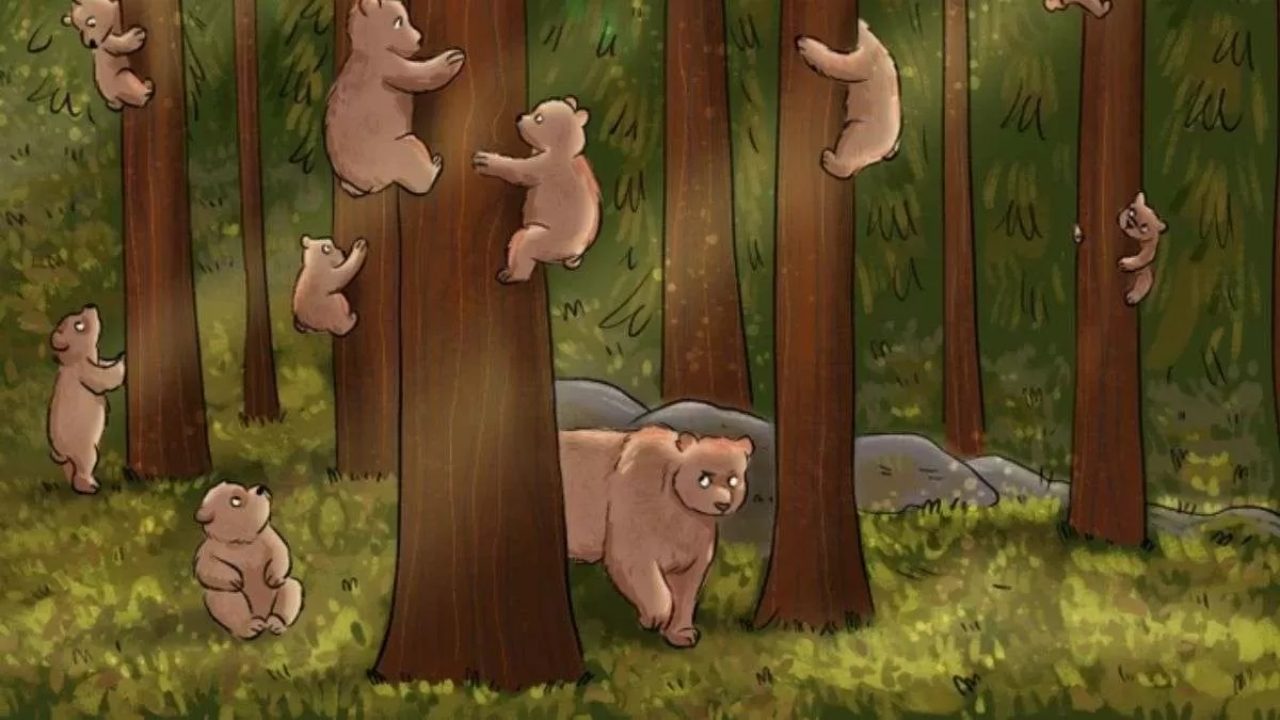In an age when visual puzzles and brain teasers are sweeping social media, a new optical illusion challenge has grabbed attention across Australia. The task seems deceptively simple: spot the figure in a dense jungle scene who is not actually a bear. What makes this challenge unique is how only a small fraction of viewers reportedly can find the answer almost instantly—making it a true test of sharp eyesight and perception.
The Challenge That’s Testing Eyesight Nationwide

At first glance, the image bursts with the natural grittiness of a forest, riddled with bear-like shapes camouflaged in foliage. The challenge: among these figures, one can’t be a bear. It’s a subtle difference, but critical to identifying the odd one out. Many Australians have taken up the task, sharing their attempts and debating the right answer. The image plays on our natural tendency to look for patterns, highlighting how even our keenest perceptions can be fooled by cleverly crafted visuals.
This isn’t just a game of spotting an animal; it’s a fascinating exploration of cognitive function. Optical illusions like this challenge viewers to engage their brains and eyes in tandem, making the hunt as educational as it is entertaining.
Why Optical Illusions Capture Our Imagination
Australia has a rich culture of puzzles, riddles, and trivia games that are both recreational and useful brain exercises. Optical illusions belong to this tradition but take it further by manipulating visual input to create confusion or surprise. The fact that only about one percent of people can pinpoint the non-bear figure in under five seconds speaks volumes about the complexity of what seems like an ordinary image.
Experts suggest such illusions work by overwhelming the brain with multiple stimuli that compete for attention. This juggling act can slow down decision-making or lead to misinterpretation, making the few who solve it swiftly all the more impressive.
Engaging Social Media and Community Buzz
The popularity of this illusion has skyrocketed on Australian social media platforms. It’s become a friendly contest among friends and families, sparking curiosity and laughter along the way. Many users post their guesses and invite others to find the answer without peeking, promoting interaction and a bit of healthy competition.
Teachers and educators also see value in these puzzles, as they can be effective tools in classrooms to encourage observation skills and critical thinking. The visual challenge links fun with learning, which is particularly important in a digital age where attention spans can wane quickly.
What Makes This Illusion So Tricky?
The design of the image is meticulous, blending bear shapes and patterns into the jungle background so well that the non-bear stands out only if one knows what to look for. It’s about spotting a detail that breaks the continuity or logic of the scene—a challenge that requires patience and keen observation.
For Australian audiences accustomed to vibrant wildlife and nature imagery, this optical illusion resonates well. It highlights how our environment can inspire playful yet thought-provoking content that doubles as mental exercise.
Optical Illusion Answer

The optical illusion invites all Australians to test their visual acuity and brainpower in a quick, engaging way. Whether played solo or as a group activity, it provides a brief, enjoyable break from daily routines. For those looking for a brain teaser, this challenge is a perfect fit—showcasing how something as simple as a picture can be a powerful tool to keep minds sharp and spirits high.
